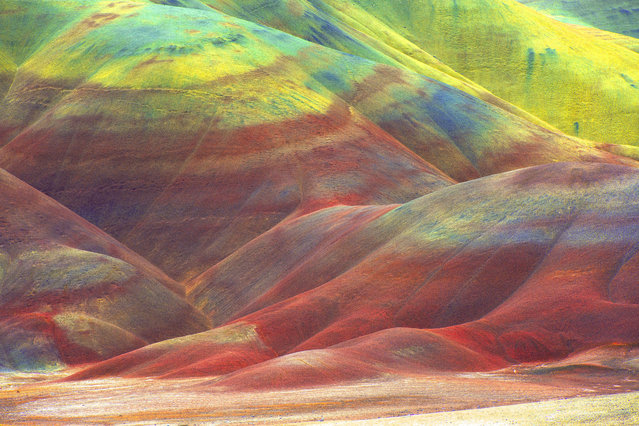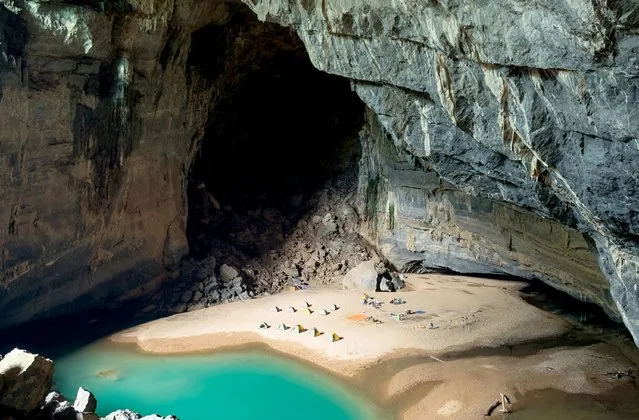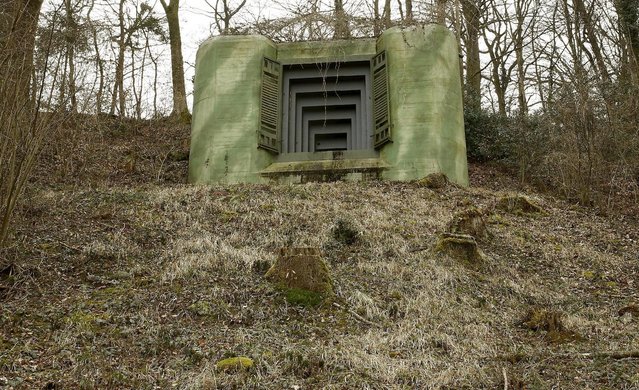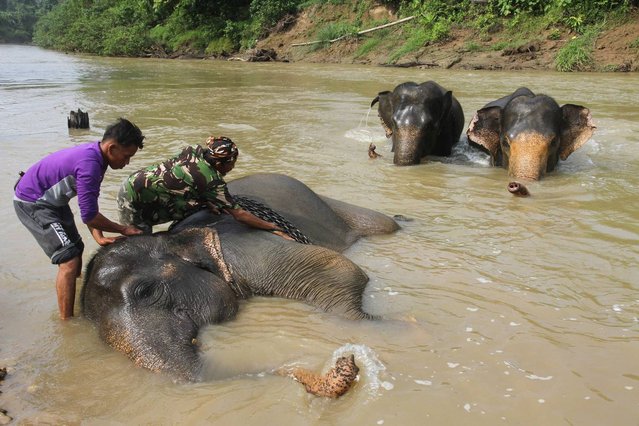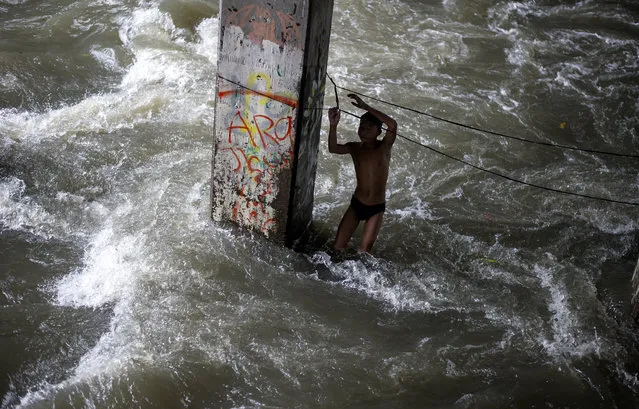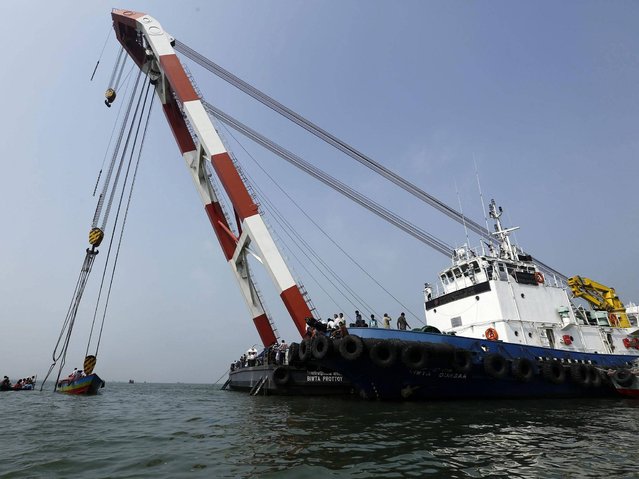
Rescue operations are undergoing to recover the sunken ferry MV Miraj 4 in the Megna River near Munshiganj, Bangladesh, 16 May 2014. The death toll in the Bangladesh ferry disaster rose to 26 on 16 May, including children and women and many more feared dead as the ferry, carrying more than 200 passengers on board, sunk during a storm on 15 may 2014, police authorities said. (Photo by Abir Abdullah/EPA)
18 May 2014 10:28:00,post received
0 comments

